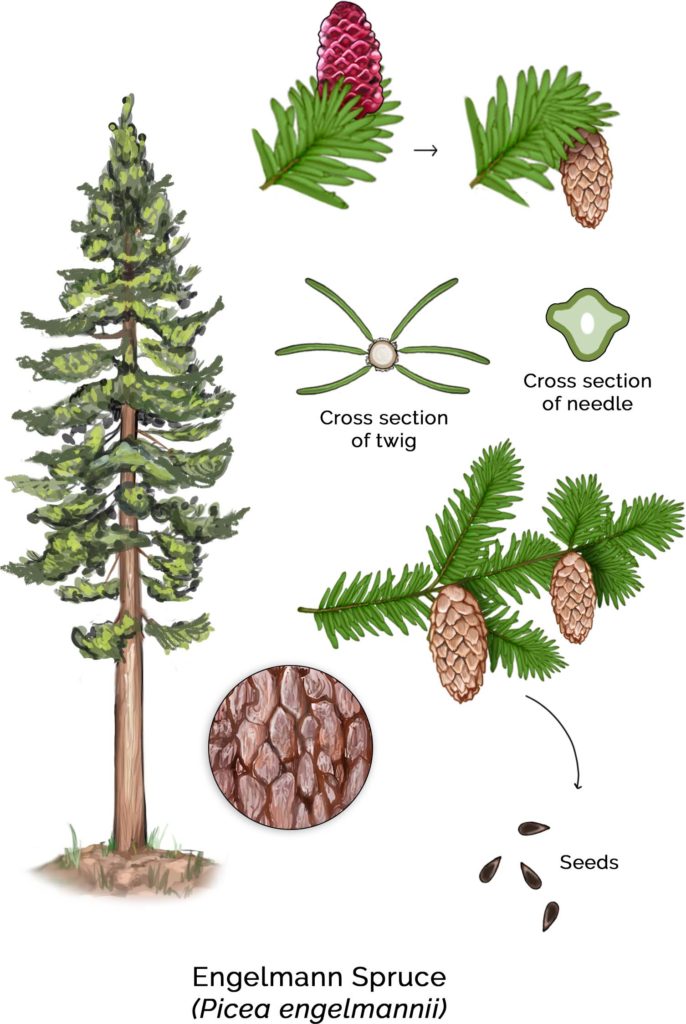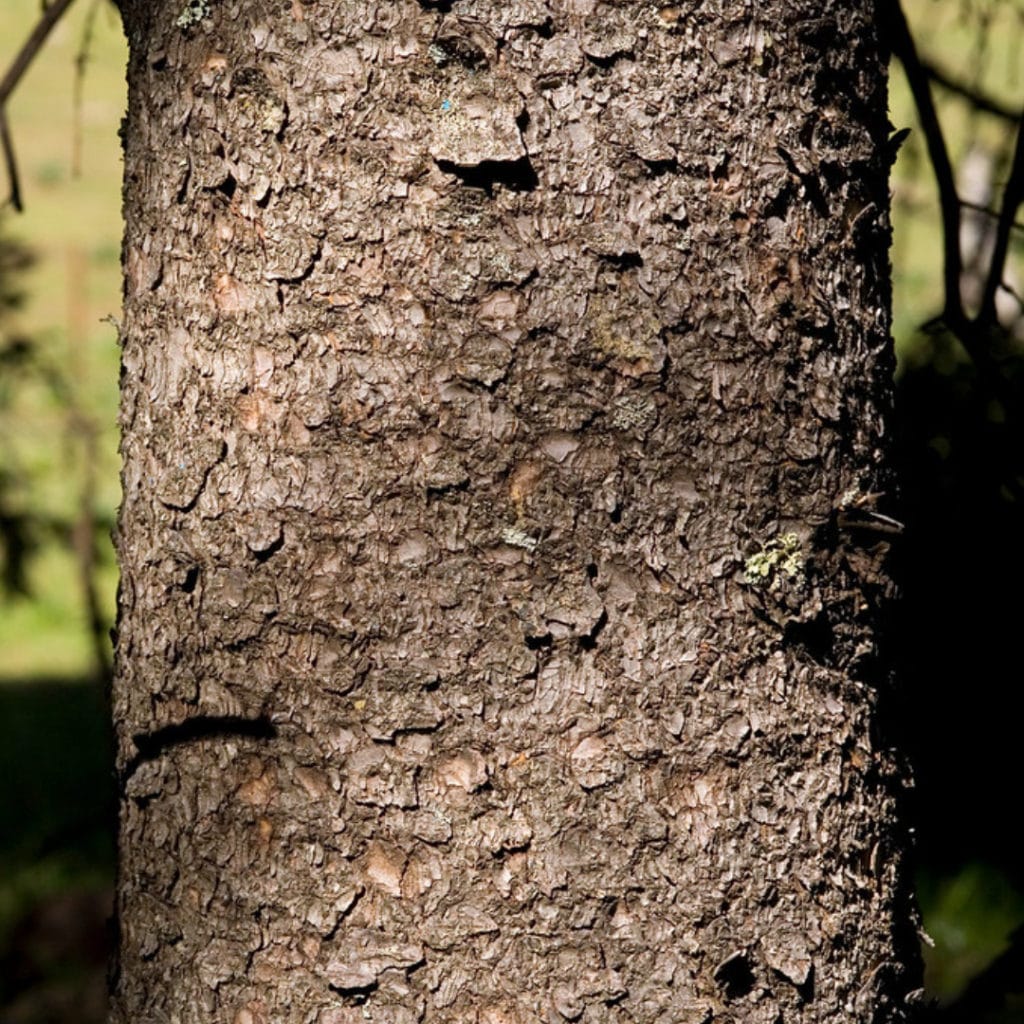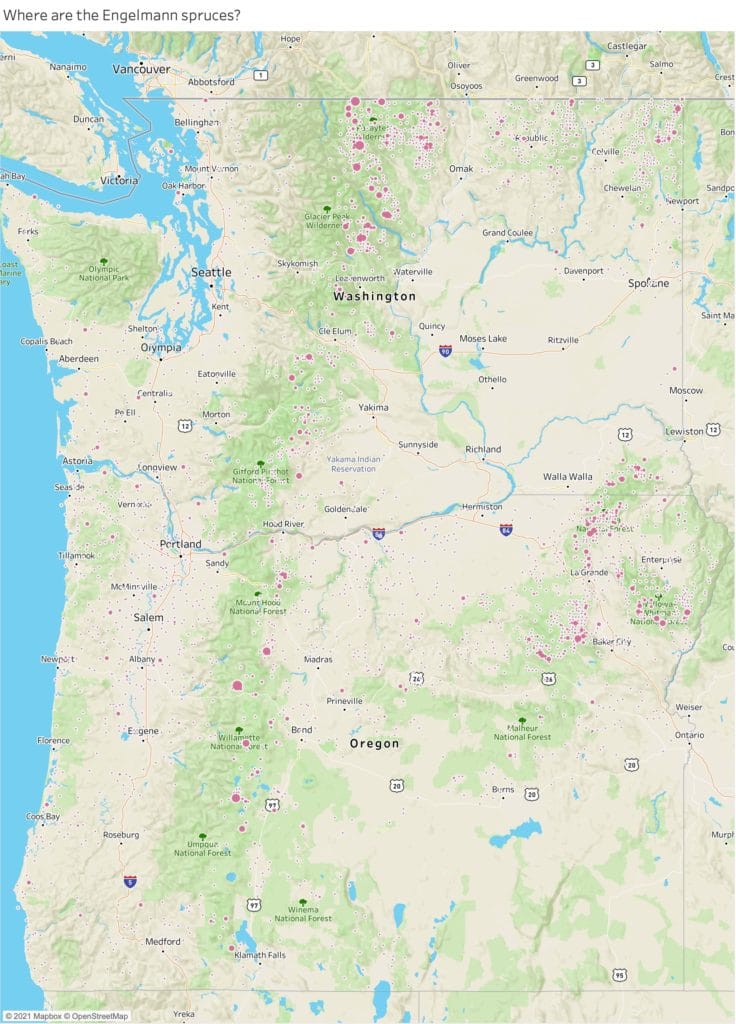Engelmann Spruce
Picea engelmannii
Banner image by Ed Ogle, CC BY 2.0, via Wikimedia Commons
The Engelmann spruce (Picea engelmannii) is a cornerstone of subalpine ecosystems across the mountainous regions of western North America. Found at high altitudes, it thrives in cool, moist climates and often dominates dense forests, where it plays a crucial role in supporting biodiversity and maintaining soil stability.

This tree forms an intricate relationship with its ecosystem, particularly through its association with mycorrhizal fungi. Certain mushrooms, such as Suillus and Cortinarius species, establish symbiotic connections with the Engelmann spruce’s root system. These fungi enhance the tree’s ability to absorb water and nutrients, while the tree provides the fungi with carbohydrates. This mutualistic relationship not only benefits the tree but also supports a network of soil organisms and other plants.

Engelmann spruce forests provide essential habitat and food for wildlife, including birds, small mammals, and insects. The tree’s wide distribution spans from British Columbia and Alberta in Canada to the Rocky Mountains of the United States, with its range closely linked to the cool, moist conditions it requires. These forests also serve as key water reservoirs, regulating runoff and maintaining hydrological balance in mountainous regions.
However, environmental pressures such as climate change, pest outbreaks, and disease are affecting its health and distribution. Despite these challenges, its ecological significance and symbiotic partnerships highlight the Engelmann spruce’s critical role in supporting resilient ecosystems.

